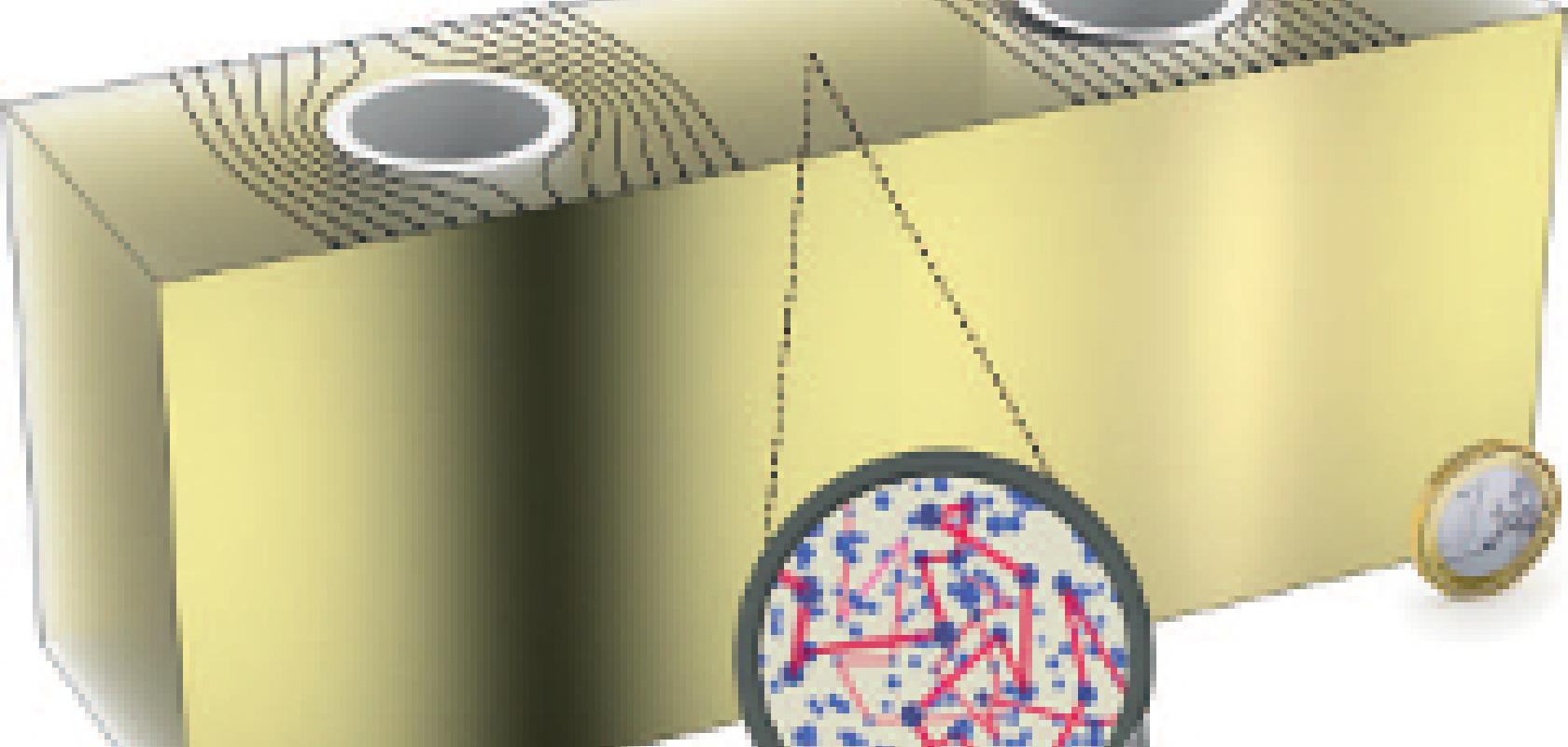At the Conference on Lasers and Electro-Optics (CLEO) which took place 10-15 May in San Jose, California, researchers from the Karlsruhe Institute of Technology (KIT) demonstrated an instrument than can make small objects disappear from sight.
Since it was published last year in Science, the instrument has been made smaller, and portable, so it can be taken out of the laboratory and into schools to excite and educate students about physics.
Described by the team as an ‘invisibility cloak’, the instrument contains no specialised equipment; it consists of a hollow metal cylinder coated with acrylic paint, which diffusely reflects light. The tube is embedded within a block of polydimethylsiloxane (PDMS), a commonly used organic polymer, doped with titanium dioxide nanoparticles. ‘There is no technology magic involved. In my opinion, this simplicity adds to the beauty of our cloak,’ said Robert Schittny, who led the research project.
In order to render an object ‘invisible’, light must not hit the item but be diverted around it. However, the increased distance that the light travels has to be compensated for. But as relativity prevents mass from travelling faster than the vacuum speed of light, there is no way to speed up the detoured light in a vacuum or in air.
The light-scattering materials used in the instrument, however, slow down the effective propagation speed of the light waves through the medium. The light can then be sped up again to make up for the longer path length around the hidden object.
‘Our cloak takes advantage of the much lower effective propagation speed in light-scattering media,’ explained Schittny. ‘Scattering basically makes the light take huge detours inside the diffusive media. When thinking of light propagation, I guess that everyone intuitively thinks of straight, ray-like propagation, just as we’re used to from our everyday life, where we can see things only if they lie on a straight, unblocked path from our eye,’ he continued.
‘In diffusive media, however, every photon undergoes multiple scattering events, taking zigzag-like random paths through the medium. Every individual photon of course still travels at the speed of light, but on average, the energy transport is much slower.’
Therefore, if the average time it takes light to travel through the PDMS block is in just the right proportion to the average time it takes to travel through the cloak, the core will become invisible.
This phenomenon of slowing down light is highly dependent on the concentration of scattering particles − the more particles there are in a medium, the slower the effective light propagation. ‘Thus, by controlling the concentration of the scattering particles, we can easily control the effective propagation speed,’ Schittny remarked. ‘In our case, we mix commonly available titanium dioxide nanoparticles (used, for example, as a pigment in white paint or sunscreen lotion) into the transparent silicone PDMS and can easily control the light scattering by the amount of particles we mix in.’
The cloak works well under many illumination conditions, according to Schittny, however it operates best under ambient lighting along with a fairly strong flashlight. ‘It is the nature of light-diffusive media to mainly reflect light instead of transmitting it. When we look at a glass of milk or our living room wall that is painted white, we almost only see light that is reflected by a diffusive medium,’ Schittny explained.
‘Our experiments, however, work in transmission. Currently, only about seven per cent of the light is transmitted through our samples; the rest is reflected or, a small fraction of it, absorbed,’ Schittny continued. ‘Thus, if the surrounding light is too bright, like outside on a very sunny day, one might see mainly the light that is reflected by the samples. Thus, we generally need rather strong light sources to demonstrate the cloaking effect.’
Now that the device is portable, the team are pursuing new applications, particularly for it to be used as an educational tool in schools and colleges. Seeing as there is no specialised or bulky equipment, its ideal to be used to teach students about physics, according to Schittny: ‘It is a macroscopic cloak that you can look at with your bare eyes and hold in your hands,’ said Schittny. ‘That means no fancy lab equipment, no microscopes, no post-processing of measurement data. The effect is just there for everyone to see.’
Schittny added: ‘Our main excitement is indeed that we are able to get this invisibility cloak out of complex lab conditions and make it accessible to a much bigger audience than just the scientific community.’
 Jessica Rowbury is a technical writer for Electro Optics, Imaging & Machine Vision Europe, and Laser Systems Europe.
Jessica Rowbury is a technical writer for Electro Optics, Imaging & Machine Vision Europe, and Laser Systems Europe.
You can contact her on jess.rowbury@europascience.com or on +44 (0) 1223 275 476.
Find us on Twitter at @ElectroOptics, @IMVEurope, @LaserSystemsMag and @JessRowbury.


